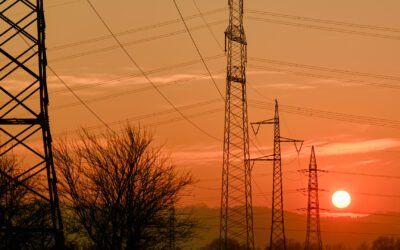• The transition is heavily reliant on energy storage solutions, especially the lithium-ion batteries which have gained significant traction in recent years.
• LFP batteries have proven to be highly durable, exhibiting excellent thermal stability and enhanced resistance to overcharging and overheating.
• The market share of LFP is expected to increase until a better alternative becomes commercially available in the market.
Developed economies across the globe are pushing to electrify the transport sector and deploy renewable generation capacity in a bid to fight climate change which poses a serious risk to humankind. This transition in turn is heavily reliant on energy storage solutions, especially the lithium-ion batteries which have gained significant traction in recent years. Given the applications of lithium-ion technology, for quite some time a growing interest was observed in battery chemistries with high energy density. Energy density relates to the amount of energy that can be stored in a given volume or weight of battery. This trend is being observed to be changing where industry is pushing to strike a balance among energy density and other critical factors, for instance stability, longevity and sustainability. One notable transition that has gained attention in recent years is the shift from lithium nick manganese cobalt oxide (NMC) to lithium iron phosphate (LFP).
Comparative Analysis of Different Lithium-Ion Battery Chemistries
NMC and LFP are two major lithium-ion battery chemistries with their own pros and cons. While NMC batteries have traditionally offered higher energy density, the inherent stability and lower cost of LFP batteries have positioned them as a compelling alternative.
LFP batteries have proven to be highly durable, exhibiting excellent thermal stability and enhanced resistance to overcharging and overheating. Moreover, LFP chemistry eliminates the need for cobalt and manganese, both expensive and controversially sourced rare earth metals essential to NMC batteries. The pros and cons of LFP are discussed in detail in following sections.
Advantages of LFP
• Safety: LFP batteries are famous for their excellent safety profile. They are more resistant to thermal runaway, overcharging, and overheating compared to NMC batteries. This makes LFP batteries a preferred choice for applications where safety is of utmost importance, such as electric vehicles and stationary energy storage systems.
• Longevity: LFP batteries have a longer life cycle compared to NMC batteries. They can endure a significantly higher number of charge-discharge cycles without experiencing significant capacity degradation. This longevity makes LFP batteries well-suited for applications that require extended service life and frequent cycling.
• Cost-Effectiveness: LFP batteries are generally less expensive to manufacture compared to NMC batteries. The production costs are lower primarily because LFP chemistry does not require expensive and scarce metals like cobalt. The cost-effectiveness of LFP batteries makes them an attractive option for large-scale energy storage projects and applications that prioritize affordability.
Disadvantages of LFP
• Lower Energy Density: Compared to NMC batteries, LFP batteries have lower energy density. This means that LFP batteries store less energy per unit of weight or volume. The lower energy density makes LFP batteries less suitable for applications that demand high energy storage capacity and compact form factors.
• Reduced Power Density: LFP batteries also exhibit lower power density compared to NMC batteries. Power density refers to the battery’s ability to deliver high amounts of power quickly. While LFP batteries are capable of delivering moderate power, they may not be as suitable for applications that require rapid bursts of power, such as electric vehicles with high acceleration requirements.
Market Share of Lithium-Ion Chemistries
As far as the market share of different lithium-ion chemistries is concerned, NMC led the market accounting for around 70% of the total unit sales in 2021 which was followed by LFP which accounted for around 30%. However, it is expected that by 2025 the share of LFP will increase radically from 30% to more than 50% indicating a clear shift in the market.

Figure 1: Market share of lithium-ion chemistries in 2021.
Source: PTR Inc

Figure 2: Estimated market share of lithium-ion chemistries in 2025.
Source: PTR Inc
Looking Ahead
Globally, the energy storage industry was focused on increasing the energy density of the solutions but recently PTR is observing a changing trend. The stakeholders in the industry are pushing to strike a balance among energy density and other critical factors including safety, longevity and sustainability. This changing trend is expected to radically alter the annual market share (in terms of unit sales) of lithium-ion chemistries in future. NMC constituted almost 75% of the market share in terms of unit sales in 2021 and it is expected that the market share will be reduced to less than 50% with LFP gaining significant momentum by 2025. The inherent stability and cost of LFP chemistry has propped it up as a compelling alternative for NMC chemistry-based batteries, the result of which is increasing market share. The market share of LFP batteries is expected to increase until a better alternative becomes commercially available in the market.
Energy Storage Service Overview
The research presented in this article is from PTR's Energy Storage service. For information about this service please submit a request shown below.
Contact Sales:
Europe
+49-89-12250950
Americas
+1 408-604-0522
Japan
+81-80-7808-1378
GCC/Rest of APAC
+971-58-1602441
More about our:
Energy Storage Market Research
Recent Insights
US Elections: Consequences of a Second Trump Presidency for Energy Sector
The US is making strides to move away from fossil fuels and eventually decarbonize the energy sector. The White House aims to achieve 80% renewable...
Sustainability Across Sectors: Highlights from GreenTech Festival 2024
Recently, I had the privilege to attend and present at the Greentech Festival, an excellent event in the realm of sustainability. This influential...
US and EU Strategies in Smart Buildings
Download Service Overview The EU and USA aim to decarbonize their building sectors to meet emission reduction targets. Initiatives like the Home...


